13 Things You Didn’t Know About the American Revolution
The American Revolution began as a response to the policies imposed by the British government under King George III. Colonists strongly objected to practices such as taxation without representation, restrictions on trade with foreign nations, and the British Parliament’s increasing control over colonial affairs.
Many Americans believed these actions violated their rights as English subjects and rejected the authority of Parliament to govern them, viewing it as an infringement on their freedoms.

For a deeper dive into the causes and key events that led to the American Revolution, check out this detailed page on the War of Independence.
1. The Declaration of Independence Wasn’t Actually Signed on the 4th of July
Although the Declaration of Independence was adopted on July 4, 1776, it was not signed on that date. The signing actually took place on August 2, 1776, with some delegates signing later.
The Declaration formally announced that the 13 British colonies in North America were no longer part of the British Empire and would henceforth be independent states. It was primarily written by Thomas Jefferson and adopted in Philadelphia, Pennsylvania.

2. Benjamin Franklin Wanted the Turkey to Be the National Bird
Today, the bald eagle is one of the most iconic symbols of America, but Benjamin Franklin famously proposed the turkey as the national bird instead. He argued that the turkey was a more respectable and virtuous animal than the bald eagle. Despite his efforts, the bald eagle was ultimately chosen.

3. “Yankee Doodle” Was Originally a British Song Mocking Americans
The song “Yankee Doodle” was originally written by the British to mock the American colonists during the Revolution. It was meant to poke fun at their perceived lack of sophistication. However, after the Revolution, Americans adopted the song as a symbol of pride and resilience, turning it into an anthem of patriotism.
4 .George Washington never actually resided in the White House
George Washington, who was the first president of the United States, never lived in the White House during his time as president. He did not live there because he had been living in Philadelphia before he became president and then moved back to Virginia after his presidency ended.
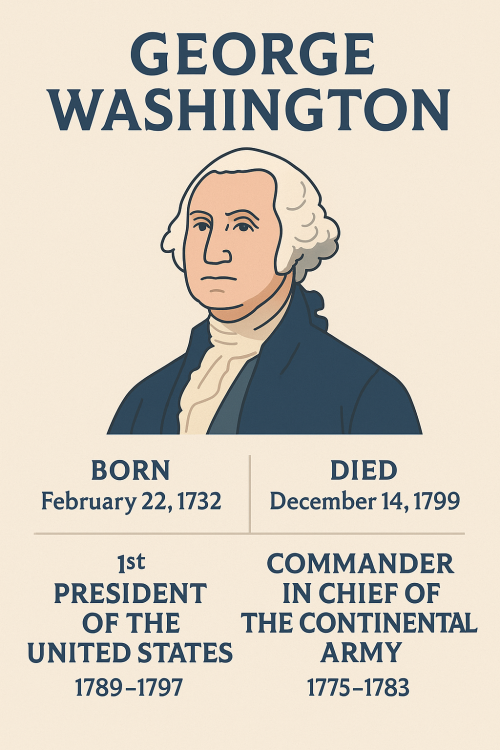
5. Paul Revere Didn’t Actually Shout “The British Are Coming!”
Contrary to popular myth, Paul Revere didn’t shout “The British are coming!” during his famous midnight ride. Revere’s primary mission was to warn the colonists in Lexington and Concord about the British soldiers advancing.
However, Revere was detained by British troops and unable to complete his mission. It was William Dawes, another rider, who continued the ride and ultimately delivered the warning. The phrase “The British are coming!” is also unlikely to have been shouted, as many colonists still considered themselves British at the time.
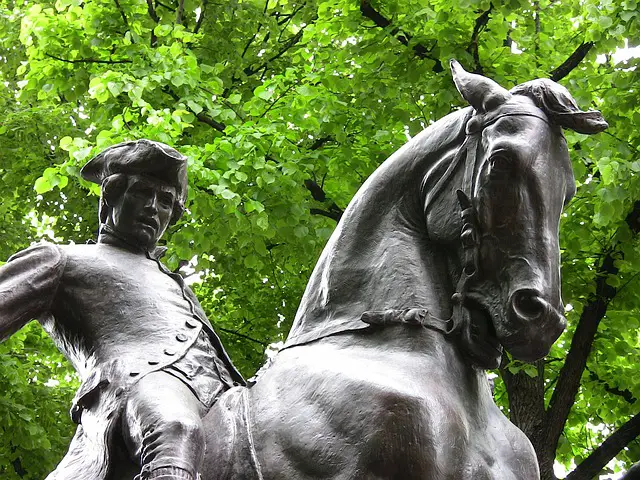
6. Women Fought in the Continental Army—Molly Pitcher and Deborah Sampson
While women were not officially enlisted in the Continental Army, many fought alongside soldiers during the American Revolution. These women often took over their husbands’ or fathers’ duties when they were wounded or killed in battle. The most famous of these women were known as Molly Pitcher, a name given to women who brought water to soldiers during the heat of battle, but who sometimes took up arms when needed.
The first recorded woman soldier in American military history was Deborah Sampson. In 1782, she disguised herself as a man and enlisted under the name Robert Shurtleff. She served for over a year before her true identity was discovered.
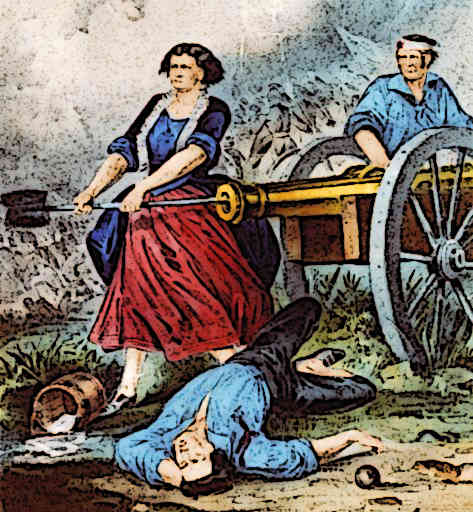
7. Molly Pitcher Fought in the Battle of Monmouth
Molly Pitcher was a woman who became a symbol of courage during the American Revolution. Known for carrying water to soldiers on the battlefield to keep them hydrated, she is most famous for her actions at the Battle of Monmouth in 1778. When her husband, William Hays, was wounded, she took his place and manned his cannon, effectively fighting as an artilleryman.
Due to her bravery and contributions to the war effort, she became affectionately known as “Lady Liberty”, symbolizing the strength and resilience of American women during the Revolution.
8. France Helped America and Played a Key Role in Their Victory
In 1778, France signed the Treaty of Alliance with the United States, becoming a crucial ally in their fight for independence from Britain. France provided much-needed financial support and sent troops, naval forces, and military supplies to assist the American cause. This support was pivotal in turning the tide of the war, especially in key battles like the Siege of Yorktown, which ultimately led to British surrender.

9. The Battle of Bunker Hill Was a Disaster for the British
The Battle of Bunker Hill, fought on June 17, 1775, was a costly victory for the British. General Thomas Gage led an assault on Breed’s Hill with 2,200 British troops, only to be met by 1,500 determined American colonists. Though the British ultimately captured the hill after a series of intense battles, they suffered devastating losses. The Americans lost about 90 men, but the British suffered over 400 casualties, including 12 officers. The heavy losses showed that the American forces were a formidable enemy, despite being outnumbered.
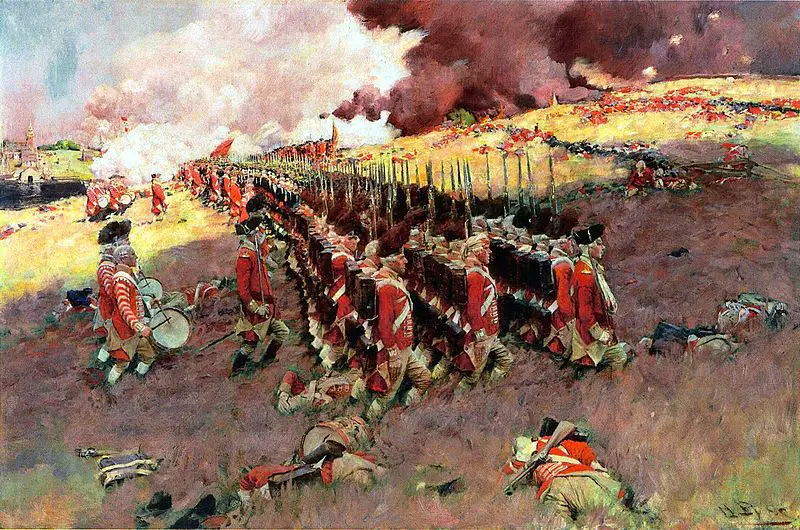
10. In 1775, Ethan Allen and the Green Mountain Boys Captured Fort Ticonderoga
In May 1775, Ethan Allen and the Green Mountain Boys made a daring and successful attack on Fort Ticonderoga, located on the New York-Vermont border. They were able to capture the fort with minimal resistance, partly due to the fort’s design. It had only one entrance, a drawbridge, which made it vulnerable. The Green Mountain Boys seized the fort at dawn, catching the British garrison off guard and securing a critical victory for the Continental Army, along with much-needed artillery for the upcoming battles.
11. Benjamin Franklin designed the first American flag
Benjamin Franklin designed the first American flag in 1776, and it was made of thirteen stripes and thirteen stars to represent the original Thirteen Colonies. The colors of the flag were chosen because they were symbols of British identity:
- Red symbolized hardiness and valor
- White symbolized purity
- Blue symbolized vigilance, perseverance, and justice.

12. The Liberty Bell Cracked When It Was Rung After the Declaration of Independence Was Signed
The Liberty Bell, one of America’s most iconic symbols of freedom, famously cracked after it was rung following the signing of the Declaration of Independence in 1776. While the exact moment it cracked remains unclear, the bell had already developed a fracture by the time it was used to announce the signing. Today, the Liberty Bell is housed in Philadelphia’s Independence National Historical Park, serving as a symbol of the nation’s commitment to liberty and independence.

13. George Washington Believed in Reincarnation
It’s often surprising to learn that George Washington may have believed in reincarnation. While his views on life after death were not fully clear, he expressed a belief in the possibility of another existence. In a letter to his wife, Martha Washington, he wrote, “I wish I could invent some expedient to free my mind from these painful sensations. But such is my condition that unless something intervenes to afford relief, I shall be miserable.”
Though this letter reflects his personal struggles, it also hints at a more spiritual or metaphysical outlook on life, suggesting that Washington may have contemplated the idea of reincarnation or some form of continued existence.
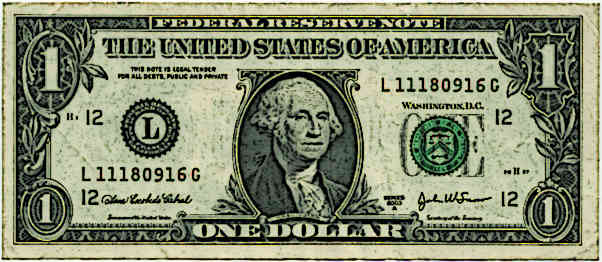
What were some unexpected events during the American Revolution?
One surprising aspect of the American Revolution was the involvement of various international powers. While most focus on the American colonists and the British, France played a crucial role in supporting the Americans, both financially and militarily, and Spain also contributed indirectly.
How did the American Revolution impact other countries?
The American Revolution inspired a wave of revolutionary movements around the world. It influenced the French Revolution and other independence movements in Latin America, showing that colonial powers could be overthrown.
Did the American Revolution have any surprising figures?
Yes! While George Washington and Thomas Jefferson are well-known, there were many lesser-known figures like the Marquis de Lafayette, a French nobleman who became a key figure in the American military, and Deborah Sampson, a woman who disguised herself as a man to fight in the war.
How did the American Revolution affect the British Empire?
The loss of the American colonies was a huge blow to the British Empire. It not only affected their economy and global standing but also led to significant political changes back in Britain, as the government had to reassess its colonial policies.
Were there any unusual strategies used in the American Revolution?
Yes, guerrilla tactics played a significant role. The American forces often used unconventional warfare, including ambushes and hit-and-run tactics, which caught the British off guard, especially in the dense American terrain.
- American Revolution
- 13 Things You Didn’t Know About the American Revolution
- American Revolutionary War
- Boston Massacre 10 Surprising Facts
- Declaration of Independence
- End of the American Revolution
- Examining the Aftermath of the American Revolution
- Examining the Role of Propaganda in the American Revolution and Its Impact on Public Opinion.
- General Anthony Wayne *Madman of the Revolution
- Global Impact of the American Revolution
- John Hancock
- Secrets of John André
- The American Revolution: An Economic & Political Struggle
- The Boston Massacre – How Many People Died?
- Top 10 Events of the American Revolution
- Top 10 People of the American Revolution
- What Caused the American Revolution